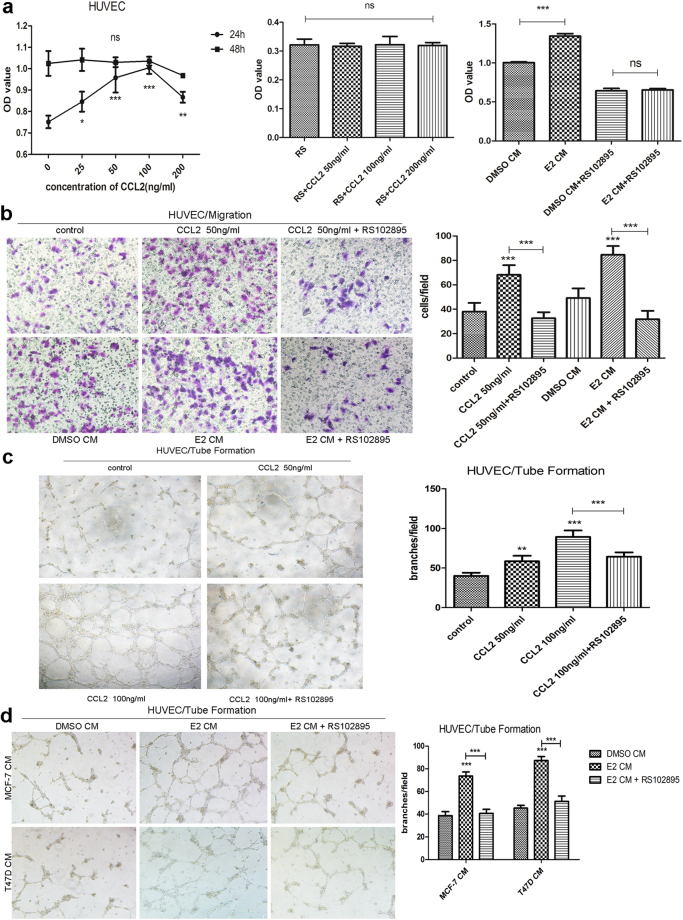Figure 3.
Estrogenic condition regulates HUVEC viability, motility and tube formation via CCL2-CCR2 axis in vitro. (a) The proliferation of HUVECs that were supplied with or without different concentrations of rhCCL2 or DMSO/E2-treated CM in the present or absence of RS102895 (20 μM) at the indicated time was measured by WST-8 assay; (b) HUVECs were supplied with or without 50 ng/ml rhCCL2 or DMSO/E2-treated CM from MCF-7 and T47D cells in the pretreatment or absence of RS102895 (20 μM) and their migratory ability at 24 h post incubation was determined by migration assay; (c) HUVECs were treated with or without various concentrations of rhCCL2 in the pretreatment or absence of RS102895 (20 μM) and their ability to form capillary-like tubes were measured using tube formation assay. (d) HUVECs were incubated in the presence of DMSO-treated or E2-treated CM from MCF-7 and T47D cells with the pretreatment of RS102895 or not. Then HUVECs were captured 10 hours after CM was added. Images are representative and data are shown as the mean ± SEM from three separate experiments. *P < 0.05, **P < 0.01, ***P < 0.001 vs. control or DMSO CM; ns, not significant.

